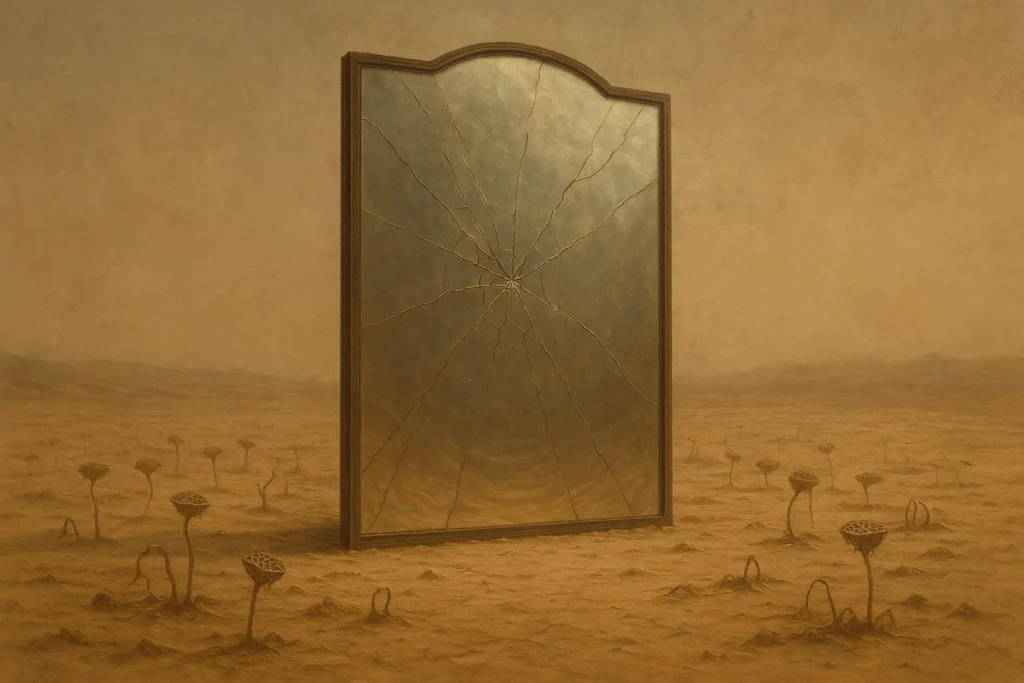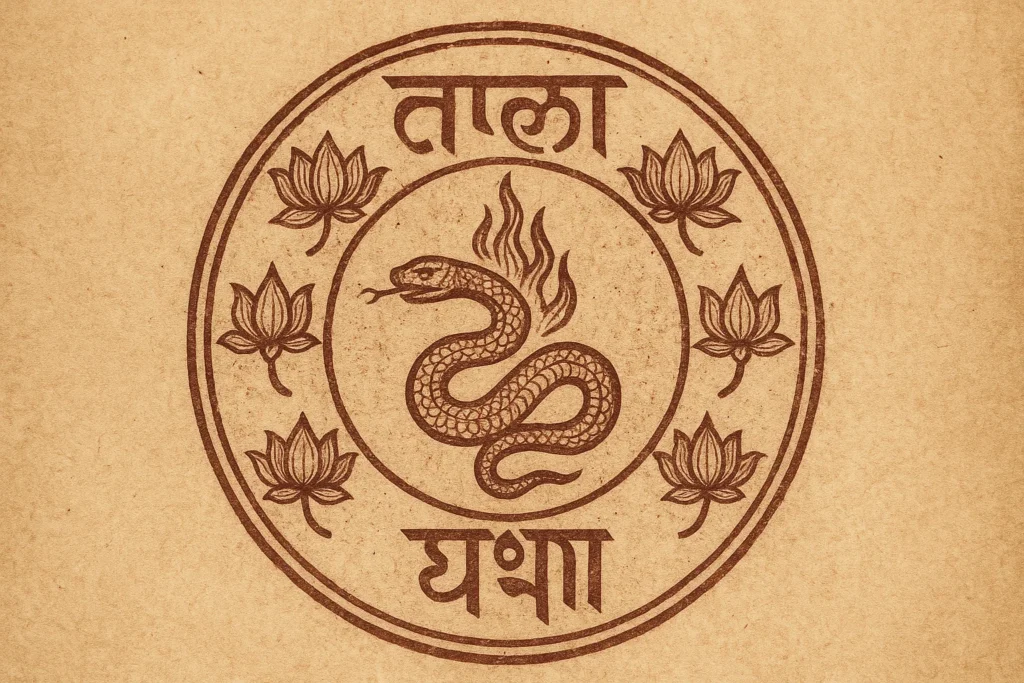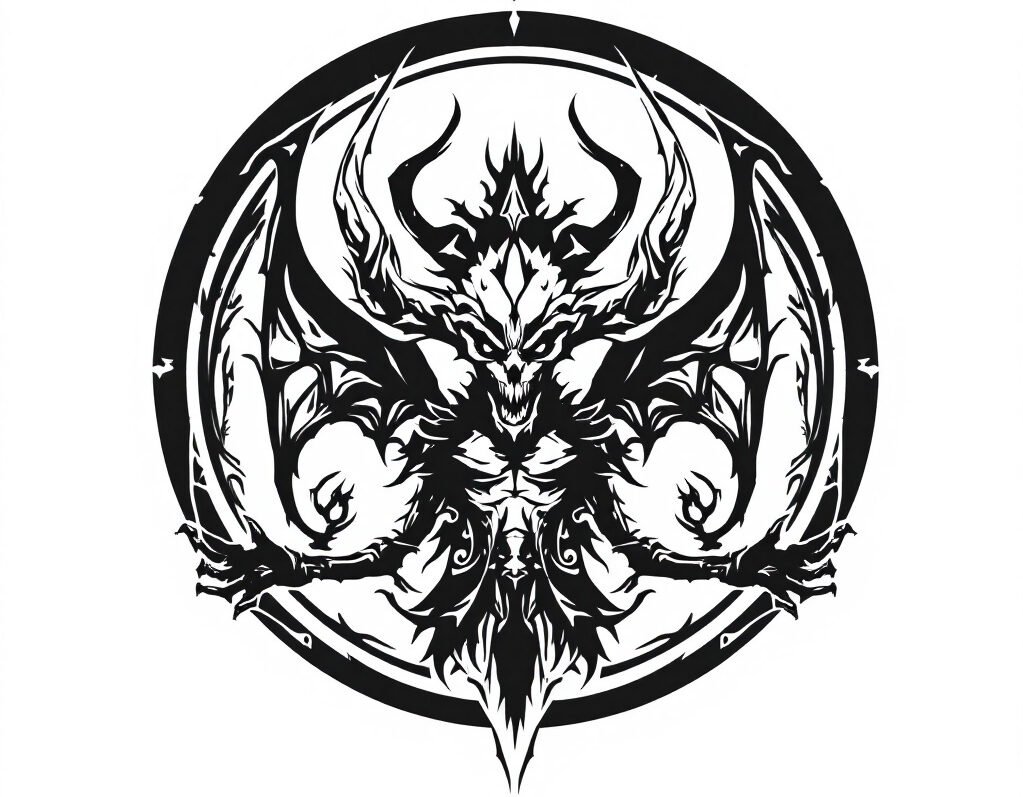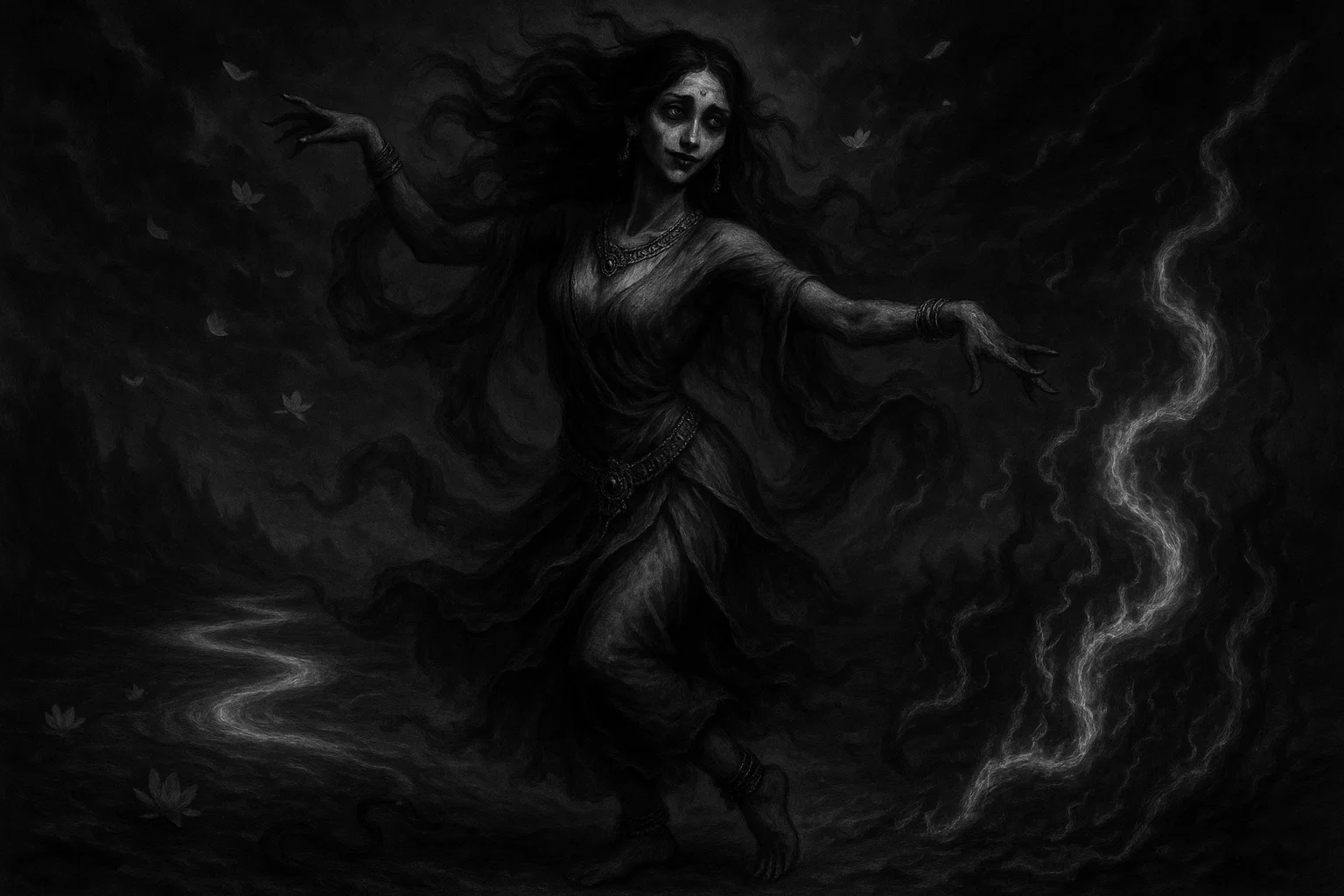Taṇhā is a key figure in Buddhist stories. She stands for “craving” or “thirst”—the strong pull toward pleasures that keeps people stuck in suffering. As one of Mara’s three daughters, along with Arati (aversion) and Rāga (passion), she tried to tempt the Buddha away from his path to awakening.
This happens in tales from early texts, where she and her sisters use their charm to distract him. However, the Buddha remains calm and overcomes them, demonstrating how to overcome inner urges.
In Buddhism, Taṇhā is more than just a character; she points to a deeper truth about why we suffer. Her role highlights how desires tie us to the cycle of birth and death.
Summary
Key Takeaways
| Attribute | Details |
|---|---|
| Names | Taṇhā, Thirst, Craving |
| Title | One of Mara’s daughters |
| Region | India, with spread to Sri Lanka, Thailand, Tibet, and other Buddhist areas |
| Type | Buddhist supernatural entity, personification of craving |
| Gender | Female |
| Realm | Desire realm (Kamadhatu) |
| Obstacle/Threat | Craving, leading to attachment and suffering |
| Associated Figures | Mara, Arati, Raga, Buddha |
| Weapon/Item | None |
| Weaknesses | Overcome by insight, meditation, and wisdom |
| Associated Deity/Figure | Buddha |
| Pantheon | Buddhist |
| Primary Sources | Samyutta Nikaya, Suttanipata, Maha-prajnaparamita-sastra |
“Taṇhā” Meaning
The name “Taṇhā” originates from the Pali language, which is the language of early Buddhist texts. It means “thirst” in a simple way—like a deep longing that never gets filled. This word is rooted in Sanskrit, where it’s tṛṣṇā, also meaning thirst or desire. Both point to the same idea: a strong pull toward things that feel good but lead to pain.
Over time, as Buddhism spread, the name remained largely unchanged.
In places like Sri Lanka or Thailand, where Theravada Buddhism is strong, Taṇhā keeps its Pali form.
In Mahayana areas (such as Tibet or China), the concept blends in but often uses local words for craving. For example, in Chinese, it might be linked to terms like tānài, which means “greedy love.” The core stays true: Taṇhā stands for the urge that fuels the cycle of life and death.
This etymology reveals that thirst encompasses more than just water. It’s a picture for bigger hungers—like wanting pleasure, power, or even to exist in certain ways.
Ancient texts (such as the Rigveda) use similar words for longing or dryness, going back thousands of years. In Buddhist thought, this thirst evolves from basic needs into a trap that blocks freedom. It changes across contexts but always warns against getting too attached.
Historians trace it to Proto-Indo-European roots (such as “ters,” meaning “dry”). This aligns with Buddhism’s view as well: craving leaves us empty, like a parched land.
Variations also appear in other languages—Avestan for “thirst” and Greek for “drying.” However, in Buddhism, taṇhā develops into a comprehensive concept, as explained in texts such as the Samyutta Nikaya. There, it’s not just a word; it’s a force to understand and let go.
How to Pronounce “Taṇhā” in English
Say it as “TUN-ha,” with the first part like “tun” in tuna, and the second like “ha” in haha. Stress the first sound a bit more. There are no significant changes in Chinese or Korean, as the name keeps its Pali form.
What Does Taṇhā Look Like?
Taṇhā appears as a beautiful woman in Buddhist tales. Texts describe her as glittering with beauty, like a shining figure meant to draw people in.
She and her sisters appear seductive, with smooth skin, long hair, and graceful forms. They change looks to tempt—sometimes young like maidens, other times mature or even old (a portrayal that illustrates how desires adapt to align with our wants).
In early art (such as cave paintings from the 10th century), she’s part of groups with Mara. She might wear fine clothes or jewels to look appealing. Her eyes could seem inviting, her smile charming… but it’s all a trick to stir up longing.
Across traditions, her look stays close. In Theravada countries (like Thailand), she’s painted as a lovely dancer or singer. In Mahayana regions (such as Tibet), she might blend with local styles—perhaps more fierce or colorful.
However, regardless of the region or the myth, she’s always beautiful and represents the allure of pleasure.
You may also enjoy:
Who Is Agares, the Demon of Earthquakes and Deception?
October 13, 2025
What Is the Abumi-guchi Yōkai and Why Does It Wait Forever?
October 22, 2025
Who Was Hiranyaksha, the Golden-Eyed Asura?
October 7, 2025
Who Was Mahishasura, the Buffalo Demon Slain by Goddess Durga?
October 3, 2025
Who Is Abaddon, the Demon of the Abyss, in the Bible?
September 29, 2025
Abura-akago: The Oil-Licking Demon Baby
October 22, 2025
Origins
Taṇhā first shows up in early Buddhist texts as one of Mara’s daughters. Mara, the Demon King, sends her and her sisters to stop the Buddha from achieving enlightenment. The encounter happens under the Bodhi tree, where Siddhartha sits in search of truth.
However, the roots of Taṇhā go back even further. Ideas about Mara and his family draw from older Hindu tales.
For example, in Vedic texts, like the Atharva Veda, there’s Mrtyu—death—as a force of harm. Mara adapts this, becoming the blocker of freedom. Taṇhā personifies craving, a key part of why we suffer. She evolves from abstract ideas in dependent origination, where thirst links to clinging and birth.
Over time, Taṇhā’s role grows in Buddhist lore. In Theravada, she’s a tempter to beat with mindfulness. Mahayana texts, such as the Maha-prajnaparamita-sastra, keep her in stories of Mara’s attacks.
She spreads with Buddhism to places like Sri Lanka and Southeast Asia, staying a symbol of desire. Cross-cultural ties also emerge—Yaksha spirits from Hindu myths influence demon ideas, but Taṇhā remains focused on Buddhist teachings.
As Buddhism blends with local customs, Taṇhā adapts but retains its core. In some areas, she’s less a person, more a force.

Role in Buddhist Cosmology
Taṇhā falls within the Realm of Desire, one of the six worlds in Buddhist maps of life. This realm, known as Kamadhatu, comprises beings driven by the senses—such as humans and certain gods. Here, craving rules, pulling us toward pleasures and away from higher paths.
As Mara’s daughter, she works for him, the lord of this realm. Mara stands for all blocks to awakening, and Taṇhā helps by stirring thirst. This keeps the cycle going: birth, aging, death. Overcoming her means breaking free to better realms or Nirvana.
Taṇhā in the Pali Canon
In the Pali Canon, Taṇhā plays a role as a tempter after the Buddha’s awakening. She and her sisters attempt to lure him with beauty and promises, but he sees through their deception. This symbolizes craving as a force to be conquered.
| Source | Quote |
|---|---|
| Samyutta Nikaya 4.25 | They had come to him glittering with beauty – Taṇhā, Arati, and Rāga – But the Teacher swept them away right there As the wind, a fallen cotton tuft. |
| Suttanipata 835 | The three daughters of Mara: Taṇhā, Arati, Rāga. |
| Suttanipata 436 | Taṇhā as one of Death’s four armies alongside desire, aversion, and hunger-thirst. |
Taṇhā in Mahayana Sutras
In Mahayana texts, Taṇhā appears in tales of Mara’s efforts against the Bodhisattva. She stands for desires that block deep wisdom. Her role emphasizes seeing through emptiness to overcome such forces.
| Source | Quote |
|---|---|
| Maha-prajnaparamita-sastra | The three girls were called Taṇhā, Arati, and Rāga. |
Powers and Abilities
Taṇhā’s power sits below Mara’s but matches her sisters’. She’s strong in stirring urges, like other tempters such as Yakshas who guard treasures or Pretas who hunger endlessly. But she’s more about mind pulls than raw force.
Her powers and abilities include:
- Shape-shifting: Changes form to young, mature, or old to fit desires.
- Seduction: Uses beauty and charm to create longing.
- Illusion: Makes pleasures seem real and needed.
- Emotional pull: Stirs thirst for senses, being, or ending things.
Taṇhā Myths, Legends, and Stories
Taṇhā’s Temptation of the Buddha
Some time after the Buddha gained full insight at Uruvela, on the banks of the Neranjara River, he sat under the Ajapala banyan tree for seven days, enjoying his newfound freedom. Then he moved to the Mucalinda tree.
There, Mara the Evil One, beaten before, saw a chance. His daughters—Taṇhā, Arati, and Rāga—noticed him sad. “Why so down, father?” they asked. “A great monk, the Buddha, has escaped my hold,” Mara said. “Don’t worry; we’ll snare him with lust,” they replied.
The daughters dressed up and went to the Buddha. “We will serve you,” they said. But the Buddha paid no mind, staying in joy. They tried again as maidens, then as women who had borne once or twice, then as older women. Still, no reaction. “Men have varied tastes; let’s each split into a hundred maidens,” they planned.
Taṇhā spoke first: “Ascetic, fear, dismay, and horror come on you! We will bind you with lust’s bonds.” The Buddha answered: “Craving, the five strands of sense pleasures are cut in me. What can you do?” Arati said: “He defeats the dark army alone. We’ll catch him in aversion’s net.” The Buddha replied: “Discontent, the five strands are cut. What power have you?” Rāga added: “We’ll trap him with passion.” The Buddha said: “Passion, the five strands are gone. You’re beaten.”
Defeated, they went back to Mara. “If mountains of gold rained, a wise man wouldn’t stir. Seeing craving’s danger, he fears bonds.” Mara lamented: “The Buddha has overcome; we’re undone.” The daughters chided: “Some men would die at our feet, but he didn’t glance. Who is this?” Mara confessed: “He’s the great hero, free from lust. He’s escaped my domain.”
Taṇhā vs Other Buddhist Demons
| Demon Name | Associated Obstacle/Role | Origin/Source | Key Traits/Powers |
|---|---|---|---|
| Yama | Judge of the dead | Pali Canon | Controls hell realms, enforces karma |
| Mahakala | Protector against evil | Mahayana sutras | Fierce form, destroys obstacles |
| Yaksha | Guardian spirits | Jataka tales | Shape-shifting, wealth protection |
| Preta | Hungry ghosts | Vinaya Pitaka | Endless hunger, thin necks |
| Asura | Jealous titans | Abhidhamma Pitaka | Warlike, envy-driven fights |
| Hariti | Child-devouring demon turned protector | Lotus Sutra | Fertility, protects kids after conversion |
| Rahu | Eclipse causer | Samyutta Nikaya | Swallows sun/moon, causes chaos |
| Kumbhanda | Pot-bellied dwarfs | Visuddhimagga | Guards directions, causes fear |
| Pisaca | Flesh-eaters | Milinda Panha | Haunts graves, spreads disease |
| Vetala | Corpse possessors | Vajrayana texts | Animates dead, tricks people |
| Bhuta | Ghosts | Theravada texts | Lingers after death, causes mischief |
| Naga | Serpent beings | Mahayana sutras | Water control, sometimes protective |
| Gandharva | Celestial musicians | Pali Canon | Scent-eaters, inspires art |
| Kinnara | Half-human musicians | Jataka literature | Beautiful songs, hybrid forms |
| Garuda | Bird-like enemies of nagas | Vajrayana texts | Flight, devours serpents |

Mystical Correspondences
| Attribute | Details |
|---|---|
| Planet | Venus |
| Zodiac Sign | Scorpio |
| Element | Fire |
| Direction | South |
| Color | Red |
| Number | 6 |
| Crystal/Mineral | Ruby |
| Metal | Copper |
| Herb/Plant | Lotus |
| Animal | Serpent |
| Trait/Role | Temptation |
Taṇhā is associated with Venus, the planet of love and desire, which fuels her seductive allure. This cosmic tie shows how desires draw us like a star’s glow, but too close burns. Scorpio adds depth—intense and hidden urges that transform or destroy. Together, they paint Taṇhā as a force of strong passion.
Fire, her element, suits the burning thirst she brings, spreading quickly like flames. South, the warm direction, matches this heat, pointing to where desires rise. Red stands out as her color, symbol of blood, love, and warning—bright but dangerous.
The number 6 ties to senses and harmony gone wrong, while ruby sparks passion. Copper conducts energy, like how cravings flow. Lotus grows from mud, showing beauty from base urges. Serpent coils for sly temptation.
Taṇhā’s Symbols & Symbolism
Taṇhā is linked to images of thirst, such as dry wells or parched earth, in texts. As a daughter, she symbolizes beauty that fades—flowers wilting or mirrors cracking.
In art, she’s with Mara, holding items like cups of nectar to stand for false joys. These point to how desires promise much but deliver pain. In Buddhist tales, her glittering form serves as a warning against the illusion of beauty.
You may also enjoy:
Aamon: The Infernal Marquis of Lust, Feuds, and False Prophecies
September 29, 2025
Rāga: The Seductive Demon of Passion and Desire in Buddhist Lore
October 16, 2025
Who Was Hiranyakashipu, the Demon King of Hindu Mythology?
October 6, 2025
Who Was Mahishasura, the Buffalo Demon Slain by Goddess Durga?
October 3, 2025
Who Was Ravana in Hindu Mythology and Why Was He Feared?
October 3, 2025
Who Was Hiranyaksha, the Golden-Eyed Asura?
October 7, 2025

